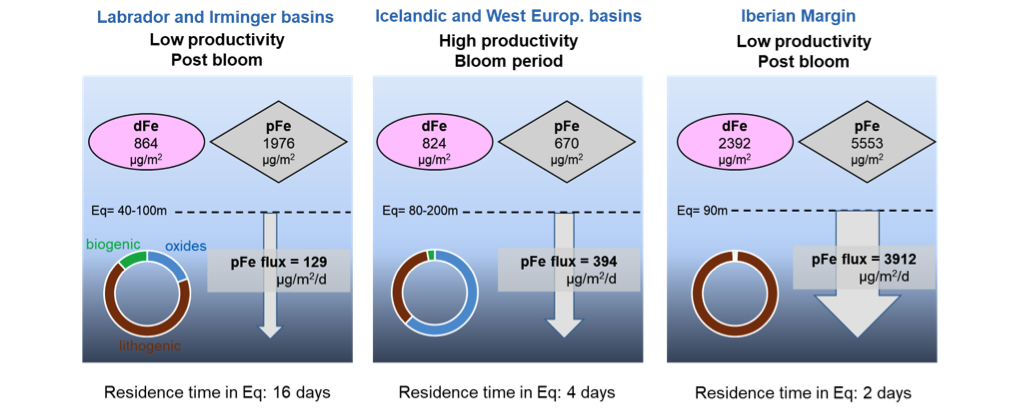Particulate trace element export in the North Atlantic Ocean
Associating the concentrations of particulate trace elements (pTEs*) and of solid phases (lithogenic, iron- (Fe) and manganese- (Mn) oxides, calcium carbonate, and opal) to the thorium-234 (234Th) approach, Lemaitre and co-workers estimated particulate trace element export fluxes and residence times in the upper North Atlantic Ocean (GEOVIDE GA01 cruise section). Export fluxes of pTEs vary significantly between elements and between basins. Lithogenic particles mainly control the pTE export fluxes at proximity of the Iberian margin where the highest fluxes were found, leading to short TE residence times in the upper layers of this area. In the west European and Icelandic basins, pTE export fluxes and the relatively short TE residence times highlight that Mn and Fe oxides, abundant in this area, act as important carriers of TEs to the deep ocean. Contrastingly, the lower pTE export fluxes and longer residence times observed in the Labrador and Irminger basins probably reflect the more important contribution of biogenic particles there.
*Aluminium (Al), cadmium (Cd), cobalt (Co), cupper (Cu), iron (Fe), manganese (Mn), nickel (Ni), phosphorus (P), titanium (Ti), vanadium (V) and zinc (Zn).

Reference:
N. Lemaitre, H. Planquette, F. Dehairs, F. Planchon, G. Sarthou, M. Gallinari, S. Roig, C. Jeandel, M. Castrillejo. Particulate trace element export in the North Atlantic (GEOTRACES GA01 transect, GEOVIDE cruise). ACS Earth and Space Chemistry, 2020. DOI: 10.1021/acsearthspacechem.0c00045
